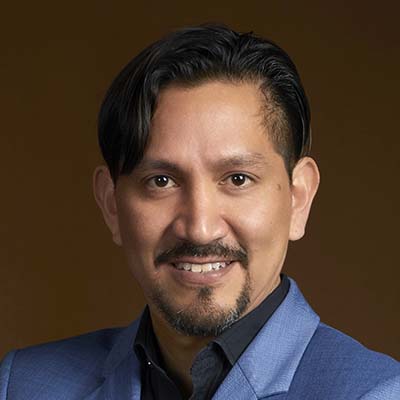

- Ben Poole
- Editorial Team, Treasury Management International (TMI)

- Loïc Girard
- Treasury Project Manager, URSSAF Caisse Nationale

- Omar Pazmiño
- Information Systems Mission Manager, URSSAF Caisse Nationale
Revolutionising French Social Security with a TMS
Managing an entire country’s social security contributions is a major responsibility and a complicated task. France’s URSSAF Caisse Nationale has overhauled its tech infrastructure to implement a new TMS to remove complexities from its cash management and drive greater efficiencies in its payment processes.
Previously known as ACOSS (Agence Centrale des Organismes de Sécurité Sociale), URSSAF Caisse Nationale (Unions de Recouvrement des Cotisations de Sécurité Sociale et d’Allocations Familiales) facilitates the gathering and distribution of France’s social security contributions as well as managing the comprehensive social safety framework.
Loïc Girard, Treasury Project Manager, URSSAF Caisse Nationale, explains: “As operator of essential services in France, it is imperative for us to recover social security contributions on wage-earning funds to meet social benefits linked to retirement, health, poverty, and unemployment.”
Previously, the department relied heavily on software that was becoming increasingly complex to manage and customise to its operational needs, particularly considering the scale of the flow volumes involved (€1500bn cash flow annually). In order to ensure that the organisation’s vital work was as efficient as possible and future-proofed, it took the decision to look for a new cash management system.
Partnering for the right solution
Omar Pazmiño, Information Systems Mission Manager, URSSAF Caisse Nationale, reflects: “It was important to try to standardise practices across the whole organisation, and so implementing a tool for cash management was the easiest way to get everyone doing the same thing. We then worked with the local treasury teams around France to establish a cash pooling process at headquarters, which we then spend on social security provision for the people of France.”
The challenge here is that each local subdivision is entirely independent, with its own director and responsibilities. And while they all follow the same rules, some local teams have specific ways of operating.
“Before we began this project, every local subdivision had a tool that was not really thought of as a treasury tool, and the connectivity was all rather fragmented,” reveals Pazmiño. “The local teams would all have to send their individual reporting to the headquarters on a daily basis.”
Today, this is not an issue thanks to the TMS implemented centrally. Now, every local team uses the same tool as headquarters, so the information is automatically available for the central finance and accounting teams. But before implementing a TMS, there were certain parameters for the selection process set by the IT department.
“One of the rules from IT for the selection process was that we did not want a SaaS tool, we were looking for an on-premises solution,” notes Pazmiño. “We had four competitors on our long list, which we narrowed down to two finalists.”
Finance and accounting also had a set of critical functions that the new system should be able to fulfil, such as adding a new entity to the platform easily, and modifying the system set-up simply and without incurring extra costs.
“We wanted a tool that would be scalable across our operations,” affirms Pazmiño. “That was critical for us because, working in social security, new rules can be made at any moment, as and when the politicians change policy.”
A primary focus on cash management
Following the selection process, URSSAF Caisse Nationale chose the Datalog TMS, with the first implementation focusing on its cash management module.
Girard states that the choice of Datalog was linked to the technology provider’s understanding of URSSAF Caisse Nationale, which is complex by its very nature. “The total sum of the social security expenses is in the region of €1,500bn annually, so it was vital we chose a provider that understood the organisation.”
Datalog is experienced in working with MNCs including Orange, the number one communication company in France, and TotalEnergies.
Bernard Duhoux, Digital Marketing Manager, Datalog, explains: “Our TMS, also available in SaaS, is completely autonomous and skilled at managing high payment volumes. For example, one of our multinational clients (in the energy business) made all of its solution deployments independently in America. We are here if they have any questions, but they can set up every new entity or bank format directly.”
This ability is one of the main reasons that Datalog Finance was selected for this initiative, and the URSSAF project team quickly started work on the first phase.
Pazmiño recalls: “The first element we needed to implement was centralising the treasury and cash flow management. We also decided to implement the processing of principal payments for all social security. In the beginning, the payments were the highest risk, so that was the most important part to get right. But thanks to our preparation, everything worked from day one.”
Stepping up a level
Following the implementation of the Datalog TMS cash management module, the second phase of the project started in September 2023 with the implementation of the payment factory and banking communication modules of the TMS. This is also a huge task due to the vast sums that are going through the TMS.
“We are now migrating all the direct debits and adding some extra flows that we didn’t do before,” outlines Pazmiño. “Previously, for some of these flows, somebody had to physically walk from one place to another to sign a document and then go to the bank to issue the wire, but now everything is done via the new system.”
This is no small achievement, as URSSAF Caisse Nationale has around 15 applications feeding data on payments and direct debits to the TMS. Whenever the rules around SEPA payments alter, as they do every so often, changing 15 different tools every time was expensive.
“The project’s second phase involves importing all the files from those 15 tools to the TMS, which will provide us with a single view of everything,” Pazmiño elaborates. “If any changes to the rules occur, we only need to update the TMS rather than 15 separate tools. This is a massive gain because some of these tools were quite old, so they were hard to modify and expensive. Having everything centralised in the TMS is a significant improvement for us.”
With the TMS providing a much better understanding of all the relevant cash management and payment data, the treasury and finance teams in Paris have established a data lake. Through the tools in the TMS and information such as intraday statements, headquarters can analyse the data and verify that all the local subdivisions are sending funds to the central treasury on time. For example, a local treasury will send the cash at 10am, meaning the central treasury will receive it at around 10.30am, and it will appear in the 11am intraday statement.
“By analysing the intraday statement, the central treasury can match all the cash flows and check that everything has been done in line with the agreed schedule,” adds Pazmiño. “We can quickly investigate any delays.”
URSSAF Caisse Nationale has also started to implement the data flow from the bank to confirm that the wires have been executed. At the start of the project, the banking communication was not put on Datalog because the treasury team used a separate tool. However, they experienced certain inefficiencies as a result, which prompted the move to unlock that functionality within the TMS.
“The TMS was producing files in the banking format and sending them to the banking communication tool, but even though that tool had all the information, it could not process the information coming back,” reflects Pazmiño. “This meant the TMS didn’t get the execution confirmation in the interface, meaning we would receive an email from the bank instead.”
But now that the switch has been made to a tool in the TMS for banking communication, the confirmation is available on the dashboard. “We can see updates for when a file is executed and when it is received, all that information is in the TMS,” affirms Pazmiño.
Much of this work with the data flow in the TMS is achieved through a combination of intelligent technologies and automation, taking much of the manual labour out of the treasury and finance processes. Duhoux confirms: “There are many instances of RPA in our software that deliver everything that is processed, automated, and scheduled in the workflow.”
Looking forward with confidence
The TMS implementation has put all stakeholders in the finance and accounting processes of URSSAF Caisse Nationale onto the same system, with forecasters, accountants, treasurers, and computer scientists all using a single, easily configurable tool.
Girard reveals: “You can design the interface quite easily – I am no computer scientist, but I have made some interfaces. The solution is robust and always available, and the data we rely on is easily accessible to answer any questions. For us in social security, it is a revolution.”
At the start of their TMS journey, the URSSAF Caisse Nationale team began with the cash management flows and then the banking communication. Today, they are looking at payment formats in great detail, particularly the Electronic Banking Internet Communication Standard (EBICS) payment protocol in the SEPA zone. Within EBICS are a couple of protocols with different levels of functionality: EBICS T, which allows for the exchange of files, and EBICS TS, which enables files to be exchanged and facilitates the digital signing of banking orders.
Pazmiño explains: “We are currently sending all our files by EBICS T, and we want to migrate to EBICS TS, so we need to implement a third step where we can use a token to sign files instead of connecting to the bank to check them.”
Despite the efficiency gains already achieved by this project, the ambition displayed at URSSAF Caisse Nationale to keep pushing forward demonstrates the organisation’s dedication to achieving the best possible results in this most crucial area of finance for the people of France.



